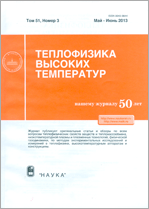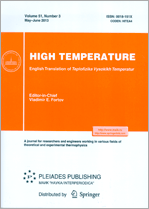|
This article is cited in 2 scientific papers (total in 2 papers)
Heat and Mass Transfer and Physical Gasdynamics
Pulse impact on cavitation bubble collapse
A. A. Aganin, N. A. Khismatullina, R. I. Nigmatulin
Research Institute of Mechanics and Machinery of Kazan Scientific Center of the Russian Academy of Sciences
Abstract:
We consider the effect of concentric pulse impact (an abrupt increase in liquid pressure at some distance from a collapsing bubble surface) on the collapse of a spherical cavitation bubble in water. The vapor dynamics within the bubble and movement of the surrounding liquid are described by gasdynamic equations, closed by wide-range state equations. The thermal conductivity of both phases and heat and mass transfer on the surface of the bubble are taken into account. The calculation technique involves moving grids converging toward the bubble's explicitly defined surface. The modified high-accuracy Godunov method is used. It has been found that the pulse impact accelerates the bubble collapse, and the bubble's radius and pressure within its cavity increase at the end of the collapse. Under pulse impact, collapse of the bubble is accompanied by the periodic focusing of radially converging compression waves in the center of the bubble. At moments of focusing, the pressure in the small vicinity of the bubble center significantly increases. These noted features intensify with an increase in the amplitude of the impulse impact.
Received: 14.07.2022
Revised: 09.09.2022
Accepted: 13.10.2022
Citation:
A. A. Aganin, N. A. Khismatullina, R. I. Nigmatulin, “Pulse impact on cavitation bubble collapse”, TVT, 61:3 (2023), 419–425; High Temperature, 61:3 (2023), 385–391
Linking options:
https://www.mathnet.ru/eng/tvt11778 https://www.mathnet.ru/eng/tvt/v61/i3/p419
|


| Statistics & downloads: |
| Abstract page: | 140 | | Full-text PDF : | 35 | | References: | 2 |
|





 Contact us:
Contact us: Terms of Use
Terms of Use
 Registration to the website
Registration to the website Logotypes
Logotypes








 Citation in format
Citation in format 
